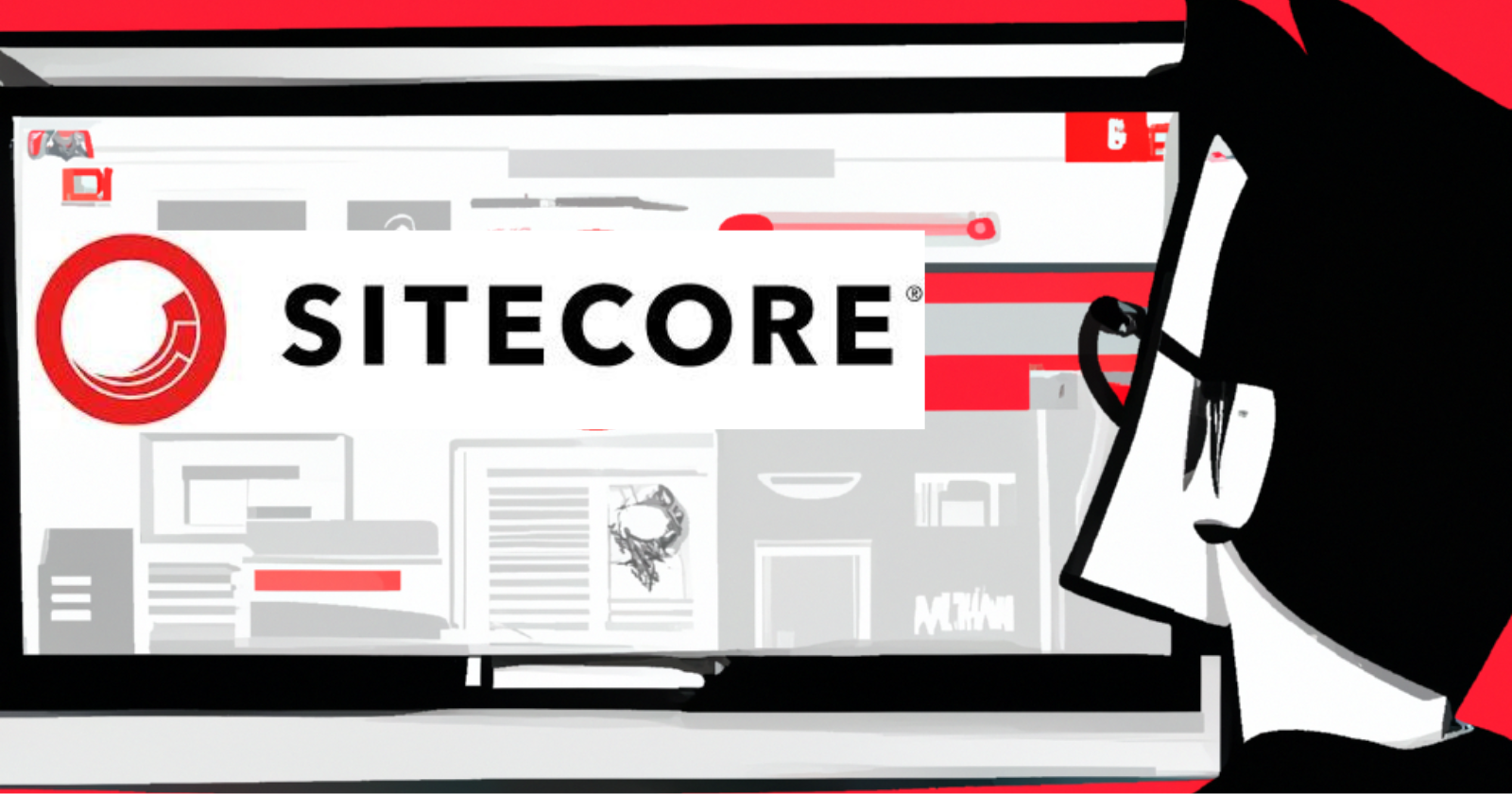Getting into Sitecore CMS as a frontend developer
 Vivek Satikunvar
Vivek Satikunvar
If you are a front-end developer, you may find it challenging to start working with Sitecore and Sitecore JSS. Sitecore is a highly capable content management system (CMS) that enables you to create and manage digital experiences with ease. On the other hand, Sitecore Headless gives you the freedom to build dynamic front-end applications using decoupled architectures. Together, these technologies offer a maze of possibilities that you can navigate to create amazing digital experiences.
What's a CMS, Anyway?
Before we dive into the terminologies of Sitecore, let's first understand what CMS and WCMS are and why it's essential for creating a seamless connected experience.
CMS: Content Management System (CMS) is a software application that allows users to collaborate in the creation, editing, and production of digital content. It is essentially the backbone of a website, allowing users to create, manage, and modify digital content without needing technical expertise.
WCMS: Web Content Management System (WCMS) is a CMS along with capabilities to manage websites.
Let's Enter Sitecore
Sitecore is a digital experience platform (DXP) that constitutes of a WCMS along with marketing automation, web analytics, personalization, search, commerce and more.
Imagine CMS on steroids – that's Sitecore for you. It's not just about managing content; it's a comprehensive digital experience platform that empowers businesses to create personalized experiences for their audience. From content management to marketing automation, Sitecore is a Swiss Army knife of digital solutions.
Traditional Sitecore development often involves a blend of backend and frontend work, with a focus on ASP.NET MVC for server-side rendering.
Embracing the Learning Process
As you dive into Sitecore, whether as a beginner or alongside seasoned developers on real projects, take each concept at your own pace. Remember, it's perfectly normal to feel a bit lost at first. Approach your learning journey with a genuine curiosity, seeking to understand rather than memorize.
Let's take a moment to demystify some of the most commonly encountered terminologies. Take them on one by one at your own pace. There are plenty of blogs and articles covering the information you need, and you can always refer to the Sitecore documentation as your primary resource.
Below are some basic concepts and terminologies widely used in the context of Sitecore
| Terminologies | Definition |
| Content | Content refers to all the information, text, images, videos, or any other material that you see on a website. |
| Templates | Blueprints defining the structure and fields of content items. Templates serve as the foundation for content creation. |
| Content Items | Instances of templates that encapsulate actual content managed within Sitecore. |
| Layouts | Layouts determine the overall look and feel of a webpage. They define where different pieces of content should go |
| Renderings | It refers to the process of displaying content or functionality on a webpage. It involves taking the data stored in Sitecore CMS and presenting it in a visually appealing and interactive format on the website. |
| Datasources | Datasources are like the sources of content for specific parts of a webpage. They provide the actual content that gets displayed in certain areas and are linked to rendering. |
| Experience Editor | It is a user-friendly tool that lets you edit the content of a webpage directly, without needing to know any code, providing a WYSIWYG editing experience. |
| Workflow | A predefined sequence of states and actions content items progress through during their lifecycle for approval. |
| Tenant | A tenant is like a container that holds multiple sites. It's useful for managing different websites or sections within a single Sitecore instance. |
| Site | A web property within Sitecore, representing a distinct website with its own content and settings. |
| Helix | A set of architectural principles and best practices for building scalable and maintainable Sitecore solutions. |
| Publishing | The process of deploying content changes from the authoring environment to the live production environment in Sitecore. |
In traditional Sitecore development, ASP.NET MVC and C# play crucial roles in shaping the architecture and functionality of digital experiences.
While not mandatory for front-end developers, familiarizing yourself with these concepts can be advantageous. Understanding the workflow and concepts, such as how HTML markup translates into CSHTML files (Views), the role of Models in managing data and business logic, and how Controllers handle user actions, can enrich your understanding and collaboration within the development process.
Thinking in Sitecore
Transitioning from traditional frontend development to thinking in Sitecore requires a shift in perspective, It's about understanding the intricacies of content management, catering to dynamic needs, and collaborating closely with content authors to deliver exceptional experiences.
Dynamic Content Management: Unlike static websites, Sitecore as CMS hosts dynamic content that can change frequently. As a front-end developer, you must anticipate various content scenarios and ensure your code can handle them gracefully. Think in terms of flexible templates, dynamic data binding, and robust error handling to accommodate content changes seamlessly.
Reusable Structures: Sitecore promotes modular content architecture, allowing components to be reused across multiple pages. Embrace this concept by designing modular and scalable front-end components. By building reusable structures, you not only streamline development but also enhance maintainability and consistency across the site.
Null Checking and Error Handling: Content authors may not always fill every field, leading to null values in your code. Incorporate thorough null checking and error handling mechanisms to prevent crashes and ensure a smooth user experience. Validate inputs, handle edge cases gracefully, and provide meaningful error messages for seamless content management.
Managing Data Source Variants: Sitecore enables content authors to create multiple variants of a single component or page. As a front-end developer, you need to accommodate these variants by structuring your markup, CSS, and JavaScript to adapt dynamically. Utilize Sitecore's rendering parameters and personalization features to tailor the frontend experience based on different data source variations.
Thinking from the Content Author's Perspective: To develop effective Experience Components, put yourself in the shoes of a content author. Understand their workflows, preferences, and pain points to design intuitive editing interfaces. Provide clear guidelines, intuitive controls, and real-time previews to empower content authors in managing and optimizing content effortlessly.
Conclusion
In conclusion, transitioning to Sitecore as a front-end developer requires a shift in mindset. It's not just about writing code; it's about orchestrating digital experiences that seamlessly blend content and design.
One of the best strategies to navigate the complexity of learning Sitecore and grasp its core concepts is to find a mentor. This mentor could be a colleague or a more experienced developer whom you can approach to discuss your questions whenever you are stuck at any point, share your learning progress, and seek guidance.
Subscribe to my newsletter
Read articles from Vivek Satikunvar directly inside your inbox. Subscribe to the newsletter, and don't miss out.
Written by
